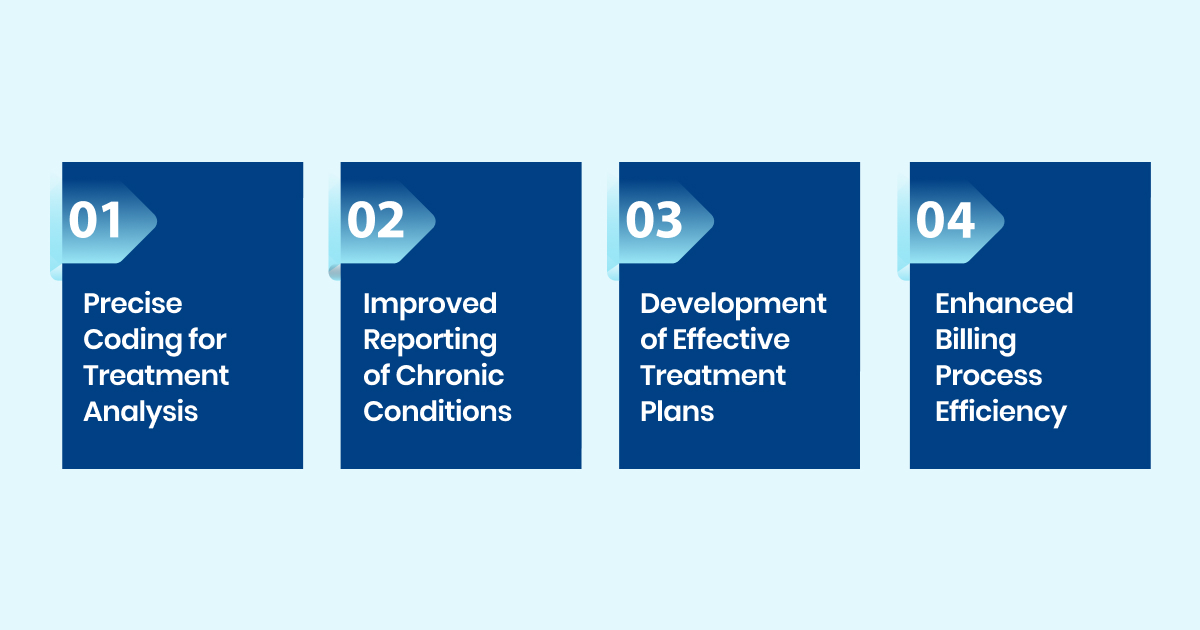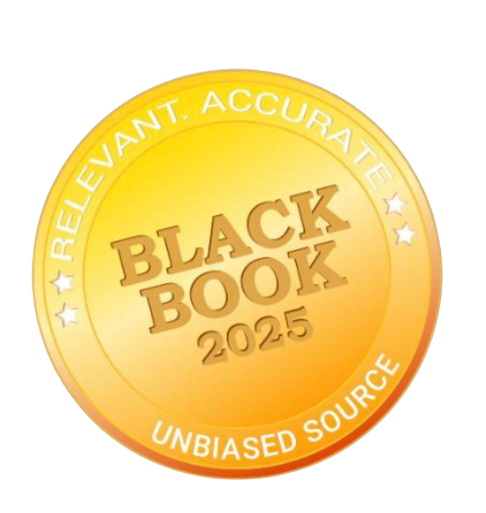.webp)
Understanding the Meaning and Definition of RAF
.jpg)
In today’s value-based healthcare environment, one number can significantly impact how providers are paid and how patients are treated: the Risk Adjustment Factor (RAF).
Used primarily in Medicare Advantage and other risk-based contracts, the RAF score helps determine how much a health plan is reimbursed for managing patients with chronic or complex conditions. The more accurate the score, the more accurately providers and plans are compensated for the care they deliver.
But what drives that number, and what happens when it’s wrong?
In this blog, we’ll explore what the RAF score measures, what factors influence it, why accurate diagnosis coding is essential, and how it impacts both reimbursement and patient care planning.
Whether you're part of a health plan, revenue cycle team, or clinical coding staff, understanding RAF is key to improving financial performance and delivering better care.
Definition of Risk Adjustment Factor (RAF)
RAF is a numerical score assigned to each Medicare beneficiary based on their health status and demographic factors. The RAF score is used to adjust payments made to Medicare Advantage health plans, ensuring that plans with sicker populations receive appropriate funding. The score is calculated using a variety of factors, including diagnoses, age, gender, and other demographic data.
What Affects RAF Scores? Key Components Explained
RAF scores are calculated based on multiple variables that reflect a patient’s overall health risk. Each factor contributes to how much CMS reimburses a Medicare Advantage plan for managing that beneficiary’s care.
1. ICD-10 Diagnoses and Condition Complexity
The biggest driver of a RAF score is the set of diagnosis codes assigned to a patient, especially those that fall into Hierarchical Condition Categories (HCCs).
Example: A patient with diabetes + complications (e.g., neuropathy) will have a significantly higher RAF score than one with uncomplicated diabetes. HCC codes capture this complexity and increase the payment appropriately. These codes are explained in detail in later sections.
Conditions like Heart failure, COPD, Cancer, and Chronic kidney disease are all heavily weighted in the risk model.
2. Demographics: Age, Gender, and Disability Status
CMS considers demographic variables when calculating RAF:
- Age: Older adults are typically assigned higher RAF values due to increased healthcare needs.
- Disability: Patients under 65 who qualify via disability often receive higher scores reflecting their complex conditions.
- Gender: Some conditions have gender-specific risk factors (e.g., prostate cancer, osteoporosis), which influence scoring models.
These variables modify the RAF to reflect predictable healthcare utilization trends for different population groups.
3. Dual Eligibility and Medicaid Status
Patients who are eligible for both Medicare and Medicaid tend to have more social and health-related challenges. CMS adjusts their RAF scores to reflect this higher resource need.
These patients often experience gaps in care, transportation, or social support, all of which contribute to more intensive management needs.
4. Geography and Local Cost Variation
RAF scores are also influenced by geographic cost indices, which adjust for regional differences in medical service costs and provider availability.
Example: A rural area with limited specialists may result in higher RAF-adjusted payments due to increased logistical and care coordination burdens.
How HCC Codes and Coding Accuracy Impact RAF
What Are HCC Codes?
Hierarchical Condition Categories (HCCs) are diagnosis groupings used by CMS to quantify risk. Each HCC represents a cluster of related ICD-10 codes associated with significant medical costs.
Each valid HCC adds a weighted value to the RAF score, so proper assignment directly impacts payment.
Why Coding Accuracy Matters
Incorrect, missed, or vague codes (e.g., using unspecified diabetes instead of diabetic neuropathy) can result in:
- Lower RAF scores
- Underpayment for care
- Compliance and audit risk
Accurate diagnosis coding is not just financial, it drives resource planning, treatment intensity, and care strategy.
Integrating RAF Logic into EHR Workflows
EHRs that support real-time RAF capture and HCC suspecting can greatly improve accuracy and efficiency.
Example: A smart EHR workflow might prompt a provider to clarify a vague diagnosis or flag a missing chronic condition previously documented.
Benefits of EHR-Integrated RAF Tools:
- Real-time prompts for coding completeness
- Automated population of HCC-suspecting conditions
- Alerts for recapture of previously reported conditions
- Audit-ready documentation workflows
Why RAF Matters - Benefits for Providers, Coders, and Care Teams

An accurate RAF score doesn’t just impact reimbursement, it shapes how care is planned, how resources are allocated, and how patient risk is understood. Here’s why healthcare organizations need to take risk adjustment seriously:
1. Improved Reimbursement Accuracy
RAF ensures health plans and providers are paid fairly for managing patients with complex needs. Accurate coding of chronic and high-risk conditions directly impacts financial performance by:
- Increasing plan payments for sicker populations
- Reducing underpayment due to missed diagnoses
- Preventing audits caused by coding inconsistencies
Missed documentation can mean thousands in lost reimbursement per patient per year.
2. Better Chronic Disease Management
When HCC-relevant conditions like heart failure, COPD, or diabetes with complications are properly documented, it enables more accurate care planning.
- Providers can proactively manage high-risk patients
- Resources can be allocated to the patients who need it most
- Population health strategies become more data-informed
- Preventive care protocols can be applied earlier, helping manage complex conditions before they escalate
RAF isn't just about reimbursement, it's a signal of clinical burden that improves care targeting.
3. Efficient Coding and Documentation Workflows
With EHR-integrated RAF support and coder involvement:
- Documentation gaps can be flagged before claims go out
- Recapture of chronic conditions becomes more consistent
- Coders can validate MEAT criteria (Monitor, Evaluate, Assess, Treat)
Coders play a critical role in maximizing RAF accuracy, bridging the gap between documentation and billing.
RAF and Patient Care: Real Impact
RAF scoring helps care teams better understand:
- Which patients need more frequent check-ins
- Where gaps in treatment adherence may occur
- How to stratify risk for care management programs
A higher RAF score signals greater clinical complexity, helping teams align resources, tailor treatment plans, and justify service intensity.
How EHRs and Coders Support Accurate RAF Scores
While RAF scoring is driven by diagnosis data, coders and technology are the engine behind ensuring that data is complete, compliant, and claim-ready.
The Role of EHR Integration
Modern Electronic Health Record (EHR) systems can significantly improve RAF accuracy by:
- Capturing diagnosis data in real time
- Alerting providers to missing documentation
- Linking ICD-10 codes to HCC categories automatically
Example: With EHR-integrated prompts, a provider treating diabetes can be reminded to document complications like nephropathy or retinopathy, ensuring a more complete RAF profile.
The Role of Medical Coders
Coders are essential to translating clinical documentation into risk-adjusted data. Their responsibilities include:
- Ensuring all HCC-related diagnoses are coded and linked to the visit
- Reviewing charts for missed or uncaptured chronic conditions
- Collaborating with providers to clarify documentation
Example: A coder reviewing a cardiology note may identify missing codes for atrial fibrillation or CHF that directly impact RAF and prompt clarification before claim submission.
How RapidClaims Improves RAF Accuracy
Accurate RAF scoring depends on seamless collaboration between clinical documentation, coders, and coding technology. That’s where RapidClaims steps in.
Our AI-powered platform supports RAF optimization by:
- Auto-validating HCC codes against documentation and CMS logic
- Flagging missing or unsupported diagnoses before claim submission
- Identifying suspect conditions through retrospective and concurrent chart analysis
- Ensuring audit-readiness with full traceability for each coding decision
- Integrating with major EHRs like Epic, Athenahealth, Cerner, and more
RapidClaims helps coders prioritize high-impact charts and ensures every RAF-impacting condition is captured accurately, defensibly, and in real time.
Whether you're managing HCC coding for Medicare Advantage, Medicaid, or ACA populations, RapidClaims gives your team the tools to close gaps, reduce denials, and maximize compliant reimbursement.
Conclusion
In a value-based healthcare environment, the Risk Adjustment Factor (RAF) isn’t just about numbers - it’s about ensuring that providers are equipped and incentivized to deliver appropriate care to the patients who need it most.
When RAF scores are accurate, healthcare organizations receive the reimbursement they deserve, chronic conditions are managed more effectively, and resource planning becomes smarter and more patient-centered. But achieving this level of accuracy depends on more than just clinical care, it requires the right documentation, coding precision, and support tools.
That’s why modern RAF workflows must integrate not only clinical expertise but also advanced coding technology that helps identify gaps, ensure compliance, and maximize financial and care outcomes.
Improve RAF scoring. Capture more risk. Get paid what you’ve earned.
With RapidClaims, your team can:
- Automatically validate HCC coding against CMS models
- Identify documentation gaps in real time
- Reduce denials and accelerate accurate reimbursement
Request a demo today to see how RapidClaims helps you close the loop on RAF compliance, coding, and payment integrity, without slowing down your team.
FAQs
1. What does RAF stand for and why is it important in healthcare?
RAF stands for Risk Adjustment Factor, a metric used to determine the financial reimbursement for Medicare Advantage plans based on the health status and risk of their beneficiaries. It ensures that health plans with sicker populations or those managing complex conditions receive appropriate funding, reflecting the true cost of care.
2. How is the RAF score calculated?
The RAF score is calculated using various factors, including a patient’s diagnoses, age, gender, disabilities, and other demographic information. The score reflects the complexity of the patient’s health and determines the level of reimbursement a healthcare provider will receive for managing their care.
3. What role do HCC ICD-10 codes play in the RAF calculation?
HCC (Hierarchical Condition Category) ICD-10 codes are essential for accurately capturing a patient’s diagnoses and reflecting their health complexity in the RAF score. These codes categorize and classify diagnoses based on severity and treatment costs, impacting the reimbursement health plans receive for patient care.
4. How does the RAF score affect Medicare Advantage plans?
The RAF score directly influences how much Medicare Advantage plans are reimbursed by CMS. Plans that enroll beneficiaries with more complex, high-risk conditions receive higher RAF scores, which leads to higher reimbursement to help cover the increased cost of providing care.
5. Why is accurate diagnosis reporting crucial for RAF?
Accurate diagnosis reporting is critical because it ensures the RAF score reflects the true health status of a patient. If healthcare providers fail to document chronic or complex conditions, the RAF score may be underestimated, leading to underpayment for necessary care. Accurate reporting ensures fair reimbursement for the level of care provided.
6. How does RAF contribute to improved patient care?
RAF helps providers better understand the health needs of their patients, especially those with chronic conditions. With accurate RAF scores, healthcare providers can tailor treatment plans to address specific patient needs, allocate resources effectively, and ensure patients receive the right care, leading to improved health outcomes.
%201.png)







